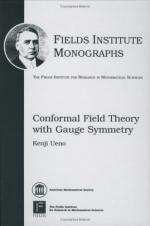|
This section contains 999 words (approx. 4 pages at 300 words per page) |

|
In the last half of the twentieth century, physicists succeeded in unifying three of the four fundamental forces of nature: electromagnetism, the "weak force" responsible for radioactive decay, and the "strong force" responsible for holding the nuclei of atoms together. The mathematical foundation underlying these advances is called Yang-Mills theory, after Chen Ning Yang and Robert Mills, the physicists who introduced it in a short paper in 1954. At present, it is the dominant approach to quantum field theory.
In quantum field theory, the classical distinction between particles and waves breaks down. A light wave, for example, can be thought of either as a wave or as a particle (a photon). A bowling ball, to take another example, is a superposition or "tensor product" of all the waves making up the neutrons, protons and electrons in its constituent atoms.
Instead of having a particular location in space...
|
This section contains 999 words (approx. 4 pages at 300 words per page) |

|


